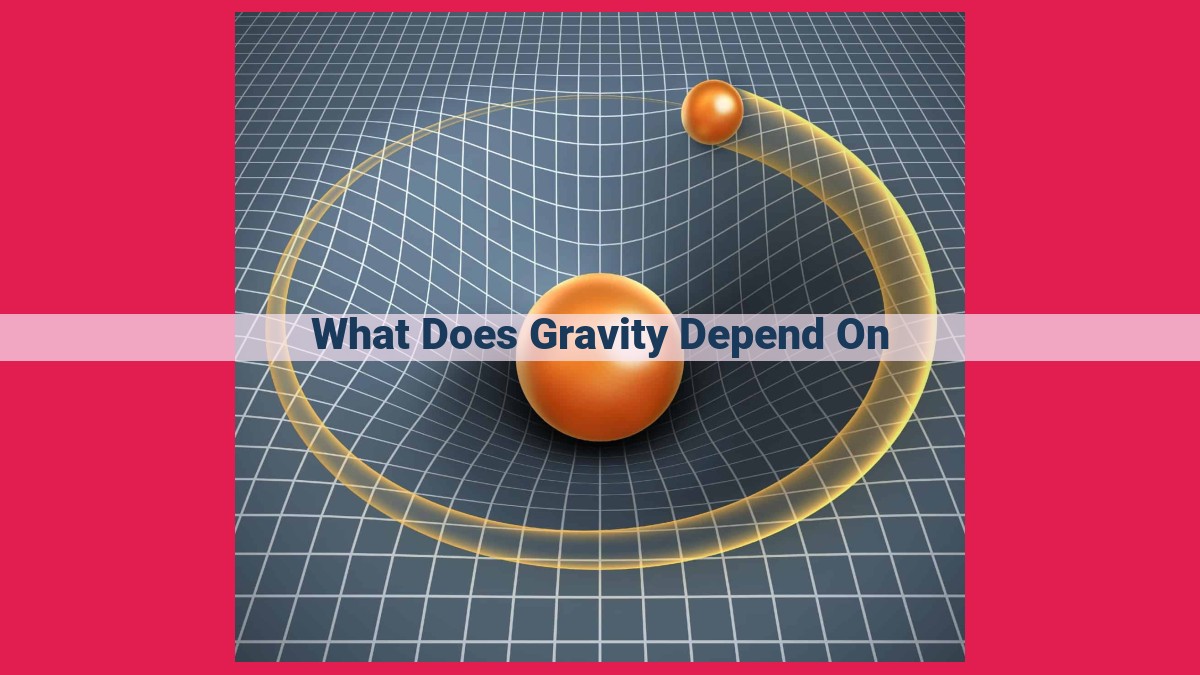
Understanding The Mass-Volume Relationship In Gravity For Seo
Gravity's strength depends on the mass of objects involved, with greater mass exerting stronger gravitational pull. It also depends on the volume or size of objects, as larger objects have more mass distributed over their volume. Understanding the relationship between mass (quantifying matter) and volume (quantifying space occupied) is crucial. Weight, density, and inertia influence gravity's mass aspect, while capacity, size, and dimensions contribute to the volume aspect. These factors determine the strength of the gravitational attraction between objects.
Gravity's Dependence on Mass
Gravity, the invisible force that binds us to the Earth and governs the motion of celestial bodies, exerts its influence based on the mass of objects. Mass measures the amount of matter an object contains, and a greater mass corresponds to a stronger gravitational pull.
The concept of weight is directly proportional to mass, which means that heavier objects experience a greater downward force due to gravity. Imagine a bowling ball and a feather: the bowling ball's larger mass leads to a more pronounced gravitational pull, making it heavier to lift.
Density plays a crucial role in understanding how mass influences gravitational force. It measures the amount of mass packed into a given volume. Denser objects, such as a brick, have a higher concentration of mass per unit volume compared to less dense objects, like a balloon. Consequently, the brick exerts a stronger gravitational pull due to its higher density.
Another aspect interconnected with mass is inertia. Inertia describes an object's resistance to changes in motion. An object with greater mass possesses more inertia, making it more difficult to accelerate or decelerate. This means that massive objects are harder to start moving, stop moving, or change their direction of motion.
Understanding Gravity's Dependence on Volume
In the realm of physics, gravity reigns supreme, orchestrating the dance of objects in the universe. While mass plays an undeniable role in shaping this gravitational force, volume a
Volume, a measure of the space occupied by an object, influences how it interacts with gravity. Think of it as a measure of the object's physical size. Just as mass is quantified by weight, volume is often expressed in terms of capacity.
To grasp the connection, imagine two objects of equal mass but different volumes. The one with the larger volume, taking up more space, has a weaker gravitational pull because its mass is spread over a wider area. Conversely, the object with the smaller volume has a stronger pull as its mass is concentrated in a more compact space.
Dimensions, namely length, width, and height, serve as the building blocks of volume. By measuring these three attributes, we can determine the volume of an object using mathematical formulas like the cube for a rectangular prism. Volume, in turn, provides crucial insights into the gravitational influence an object exerts.
In essence, volume plays a pivotal role in defining the physical presence of an object, influencing how it responds to gravity's embrace. Comprehending this relationship is essential to unraveling the wonders of the cosmos and its gravitational dance.
Understanding the Mass-Volume Relationship in Gravity's Grip
Gravity, an enigmatic force that shapes the universe, is intricately linked to the mass and volume of objects. Understanding this relationship is fundamental to comprehending the diverse gravitational phenomena we witness around us.
At the heart of gravity lies the concept of mass. Mass quantifies the amount of matter present within an object, and it is this mass that gives rise to gravitational attraction. Mass is measured in kilograms, and the greater the mass of an object, the stronger its gravitational pull.
Complementing mass is the concept of volume. Volume, measured in cubic meters, quantifies the physical size or the amount of occupied space by an object. While volume does not directly contribute to gravitational force, it plays a significant role in understanding how mass influences gravity.
The concepts of weight, density, and inertia provide insights into the mass aspect of gravity. Weight, measured in newtons, is the force exerted on an object due to gravity. It is directly proportional to the object's mass. Density, on the other hand, measures the mass per unit volume of an object. Objects with greater density possess more mass in a given volume, resulting in a stronger gravitational pull. Inertia, a property of matter, describes the resistance of an object to changes in motion. Inertia is directly proportional to mass, indicating that more massive objects are harder to accelerate or decelerate.
The volume aspect of gravity is captured through the concepts of capacity, size, and dimensions. Capacity refers to the ability of an object to hold or contain other objects, and it is directly related to the object's volume. Size describes the physical dimensions of an object, while dimensions refer to the measurements of length, width, and height used to calculate volume. Understanding these concepts allows us to grasp how the size and shape of an object can influence its gravitational pull.
In essence, the mass-volume relationship in gravity highlights the interplay between the two fundamental properties of matter. Mass determines the strength of gravitational attraction, while volume provides insights into how mass is distributed and affects the gravitational interactions of objects.
Related Topics:
- M On Palm: A Rare Skin Condition Affecting Palm | Causes, Symptoms, Treatment
- 10 Essential Qualities Of An Exceptional Mother: Fostering Child Development
- Mastering Square Root Operations: Unrooting, Eliminating, And Solving
- Northern And Eastern Hemisphere Positioning: A Geographic Overview Of Russia
- Understanding Wet-Bulb Temperature: A Key Indicator Of Heat And Humidity Discomfort